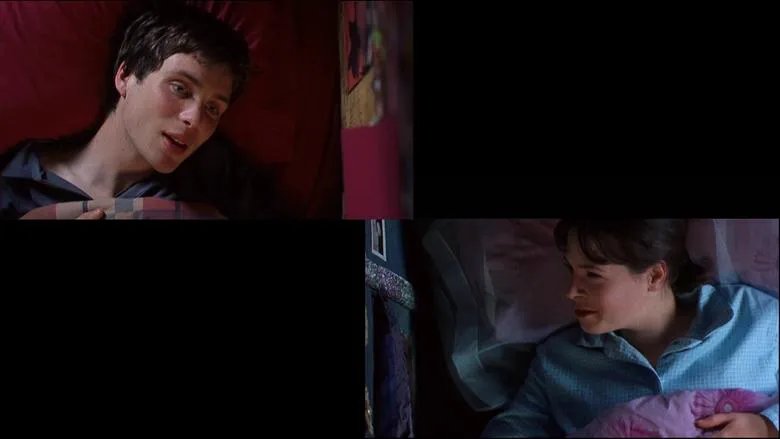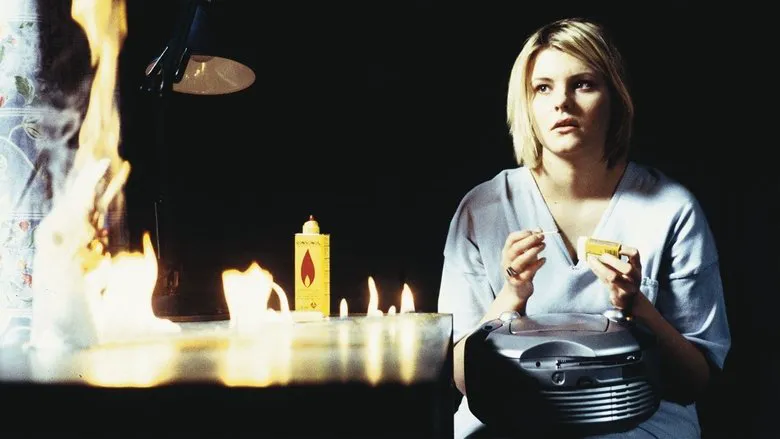A Twisted Tale of Love and Destruction: A Review of “Disco Pigs”
While the concept of intrauterine perspectives might have been pioneered by Volker Schlöndorff’s memorable “The Tin Drum,” Kirsten Sheridan’s “Disco Pigs” introduces a unique twist. Moments after birth, in adjacent hospital cribs, a baby girl and boy, born simultaneously, grasp each other’s hands on screen. Destined for each other, they remain inseparable for 17 years. Separated only by a wall they eventually break through, their beds in neighboring apartments become the setting for nightly hand-holding rituals. No sex involved. Just a boy and a girl, friends.
How many of us know couples who have been “at the same desk since first grade,” married right after school, had a child to avoid divorce, only to eventually divorce and realize that “at the same desk until death do us part” would have led to madness? But in “Disco Pigs,” things take a darker turn.

Forbidden Love and Societal Rejection
The world rejects their forbidden love, and Pig and Runt meet a tragic end in their prime. Almost immediately, questions arise about the director’s choices. Why do they both harbor such hatred for the world if they love each other so deeply? Was her father a monster? Even so, she still had a mother, and he had both parents. Is that enough to justify such all-encompassing hatred? Moreover, how is their love expressed beyond holding hands at night? Surely, it manifested in some way over those seventeen years. Or is it, as seen in Margarethe von Trotta’s “Sisters, or the Balance of Happiness,” a pathological symbiosis in need of treatment?

Symbiosis or Love?
The more you watch, the more you lean towards symbiosis. Brian O’Byrne’s portrayal of Pig is disturbingly pathological. His vacant, glassy-eyed stare is typical of hardened maniacs, born of loneliness and a complete lack of love. No need to watch Fritz Lang’s “M” to understand this. Another question arises: If Runt (Elaine Cassidy) is considered “smart,” while Pig is deemed “lost to society,” why is he allowed to stay home while she is sent to a correctional facility? Why didn’t society separate them in the opposite order, if separation was the goal? He belongs in the gutter, and then none of this would have happened: no fights, no robberies, no suicides, no murders. As incurable, he would be forever sedated with his “free booze” like amitriptyline, while Runt, still potentially treatable, could become a person, love someone, starting with a new friend – love people in general, something she clearly never did. Why are we being sold a fatal attraction with an antisocial element, why are we being manipulated with the beauty of the seaside?

A Director’s Vision or a Borrowed Dream?
The answer, unfortunately, is clear from the synopsis. Director Kirsten Sheridan, daughter of Oscar-winning director Jim Sheridan, received an excellent education, attending New York University and other prestigious institutions. She has undoubtedly seen it all. But if everything has already been done by others, and a young age of 25 hasn’t provided significant personal experience, how can she sing about what truly matters? She must invent stories, passionately and desperately, disregarding logic and intuition. Beautiful cinematography and the well-ordered European life – borrowed, accumulated experience – will excuse and explain everything. At worst, it will confuse, but the result will be achieved: people will flock to see it and discuss it, discuss it. The main thing is that the world doesn’t accept forbidden love, and everyone must die.

A Sociological Phenomenon
For those who weren’t captivated by Kirsten Sheridan’s “Disco Pigs,” one thing remains curious: its sociological phenomenon. We observe a recurrence of such infantilism approximately every twenty years. The last time fatal beauties similar to “Disco Pigs” were in vogue was in the “narcotic sagas” of Northern Europe in the early 80s. Back then, instead of incest, shooting up was considered stylish, but the rest was the same. So, perhaps we are not talking about cinema at all, but about education, about each generation in which the more sophisticated explain to the less sophisticated some things they haven’t thought about themselves. They do this with screams and anguish, as is characteristic of all youngsters. They are doing the right thing from a sociological point of view.